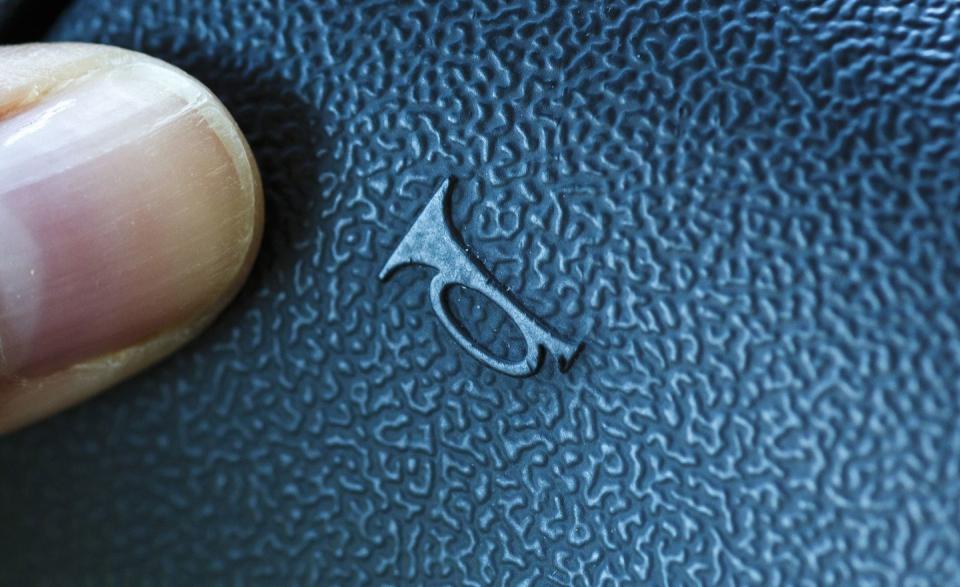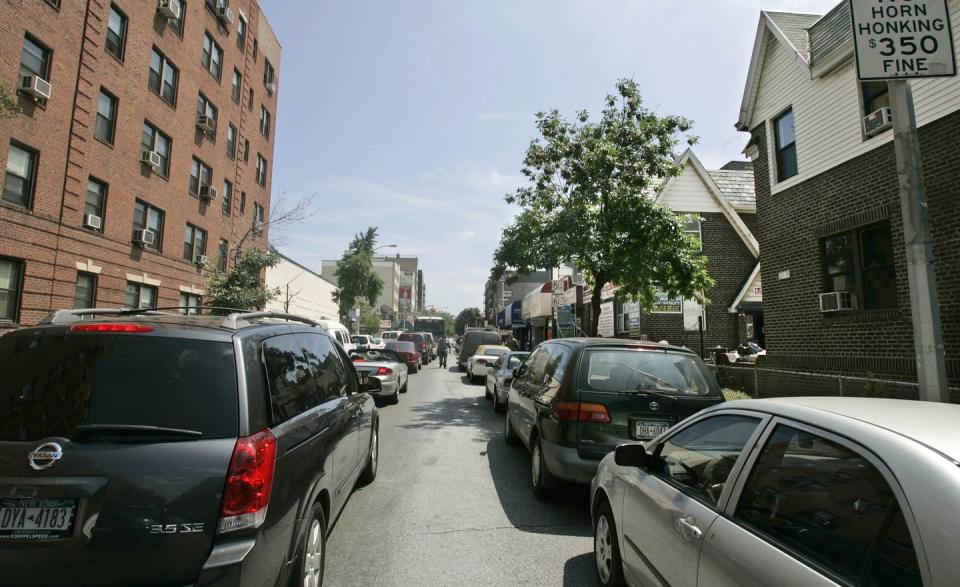How the Car Horn Honked Its Way into Our Lives

There is one part of the car that helps save lives, infuriates other drivers, and causes sleepless nights for many city dwellers all at the same time: the horn. The humble horn doesn’t get much love, yet it was one of the first accessories fitted to horseless carriages at the dawn of the automobile.
Some may find driving without modern conveniences such as satellite navigation and USB smartphone-charging ports positively Neanderthal. But life without a car horn-especially in the early 20th century, when traffic also included horses-could have been catastrophic.
Over the years, honking one’s horn has gotten something of a bad rap. Perhaps some of the blame lies with individuals who honk a car horn to express anger or frustration. However, during the early days of the automobile, “using the horn was considered courteous,” said Matt Anderson, curator for transportation at the Henry Ford museum in Dearborn, Michigan. “You were expected to honk your horn if you were coming up on pedestrians, to let them know you were bounding down the street,” Anderson added. “You’d be thought rude if you weren’t using your horn, which is the exact opposite of where we are today.” That’s true in America, anyway. However, we’ve driven in some parts of the world-Cairo, for one-where dense traffic is punctuated by near-continuous tapping of car horns by motorists who seem to rely on the auditory input to locate one another.

Origins of Honking
At the turn of the 20th century, there were “three different flavors” of car horn available, Anderson said. “You could have an air horn, the plastic kind of squeeze bulb,” he said. “You could have an exhaust horn where you’d literally cut into the exhaust pipe and it would drive what sounded like a steam locomotive. Or the electric horn, which is more like what we have today, of course.”
Pioneers in car-horn technology included Miller Reese Hutchison, an avid inventor who later became chief engineer for Thomas Edison’s laboratory in West Orange, New Jersey. Among Hutchison’s many inventions-which, ironically, also included an early hearing-aid device-was his car horn that would become synonymous with an entire era.
Enter the “Ahooga”
The Klaxon, which he patented in 1908, was Hutchison’s most recognizable contribution to the car world. This unique-sounding device became as ubiquitous as the Ford Model T to which it was frequently attached. In cities around the world, the Model T’s signature sound was the klaxon’s unforgettable ahooga.
What gave the klaxon its unique sound? “There’s a diaphragm that gets struck by teeth on a rotating wheel,” Anderson explained. “There’s an electric motor that drives it, but as the wheel comes up to speed you have that ahoo, and as it slows back down, that gah sound to it.” After jumping from the Ford Model T to the Model A, the klaxon horn began to fade away by the 1930s. In its place arrived simpler electric horns which, by and large, have remained relatively the same up to the present day.

Modern Beeps
“Basically, the horn’s function is still the same as in the beginning,” said Matthias Fischer, a product manager for car horns in Bosch Automotive’s aftermarket division. Having built car horns since 1921, Bosch is now a leading supplier to car manufacturers, including BMW, Chrysler, Fiat, Ford, General Motors, Honda, Mercedes-Benz, Porsche, Renault, Subaru, and Volvo, among others.
Modern horns last longer and “use less power and less electronic magnetic interference” than before, Fischer said. “Anti-corrosion materials have helped extend horn life, and the Teflon filters used by Bosch help keep out dirt and humidity to maintain horn life and quality.”
Bosch makes three types: disc horns, fanfare horns, and compressor trumpets. The last of those three is applicable only for commercial vehicles, such as buses and tractor-trailer rigs. According to Bosch, a disc horn produces a more “harsh metallic sound,” while the trumpet-amplified fanfare horn emits a “harmonic and fuller sound.” This helps explain why some cars emit a more piercing beep while others emit a richer (and less annoying) tone.
The reasons drivers have for pressing the horn button vary widely, but once they do, there’s a bit of science involved:
Current travels from a relay, through a coil and onward to an electromagnet. A magnetic field is created.
This magnetic field draws an armature toward its core, which in turn flexes a metal diaphragm.
As the armature and diaphragm travel toward the core, the contact point disengages and stops the current flow.
This causes the armature to spring back after striking the core. This motion closes the circuit, which starts the process once again.
The oscillation effect of the metal diaphragm is what gives a horn its sound. If you keep pressing the horn, this process continues indefinitely‚ much to the chagrin of your fellow drivers.
Honk at Your Own Risk
While a functioning car horn is mandatory equipment on all passenger vehicles, each state decides what’s legal and what isn’t for the devices. New York State law says horns must not be “unnecessarily loud or harsh.” California’s law gets a bit more specific, saying that the device should be “capable of emitting sound audible under normal conditions from a distance of not less than 200 feet,” but also not emit “an unreasonably loud or harsh sound,” nor can a vehicle be equipped with an aftermarket one that emits a sound greater than 110 decibels (dbA), which is an expression of how loud a sound is to the human ear. (According to Bosch, all its passenger-vehicle horns emit 110 decibels when measured six feet in front of a vehicle.)
That 200-foot horn rule holds true for many other states, too. While decibel levels are monitored, the sound created by a car horn remains far more liberal-although automakers rarely get creative when it comes to honking their own horns, so to speak.
The Car Was Not Invented in America, But We Invented What the Car Meant
Automotive Firsts: The First Production Cars with Turbocharging, Navigation, and More
Old Cars, New Respect: Extending Historic Preservation to Automobiles
One notable exception was the Plymouth Road Runner muscle car from the 1960s. A press of the horn button and this brutish machine would suddenly emit a cartoonlike meep meep, just like the feathered nemesis of Wile E. Coyote. It remains a rare but adorable exception in the long history of the automobile car horn. Otherwise, most horns today are straightforward. They can be annoying, but they can also save lives.
You Might Also Like

 Yahoo Finance
Yahoo Finance 